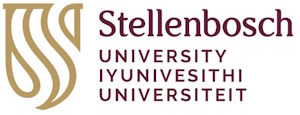
Dr Mkhululi Mabhula, PhD graduate at the Faculty of Engineering, had no say in the choice of the South African university for his undergraduate engineering studies. He was a participant in an interchange of knowledge programme of his country, Zimbabwe, which allocates universities randomly to students. Dr Mabhula’s institution turned out to be Stellenbosch. This proved to be serendipity indeed, because eight years later he regards Stellenbosch as his home.
“It has always been my dream to study something in aviation. When I came here in 2012, I chose the undergraduate degree programme which I thought was closest to aviation, namely Electrical and Electronic Engineering. During my undergraduate studies I fell in love with power systems and wanted to pursue that field in my postgraduate studies in 2016. Unfortunately, at that time there were no bursaries available in power systems. Consequently, my undergrad project leader, Prof Johan Vermeulen, suggested I try the nearest field available, namely electrical machines. He referred me to Prof Maarten Kamper, an expert in this field. With this introduction, I met a wonderful supervisor who guided me. After two years of working on my master’s, I managed to upgrade to a PhD.
He briefly explains his research topic titled Analysis and design optimisation of grid-connected wound rotor synchronous and induction motors in laymen’s terms: “Concentrated Solar Power (CSP) plants rely on water for cleaning the reflecting surfaces, power generation and cooling. Hence, solutions are needed to significantly reduce or replace the water consumption while maintaining the overall efficiency of the CSP plant. The project was about the development of the CSP dry-air cooling system as the major technology where water is at premium or restricted use. The development of the cooling system includes the drive electrical motor, the gear box and fan. In this research the focus was on the development of high performance grid-connected electrical motors for dry-air cooling fans. Novel approaches to the analysis and optimisation design were proposed to improve the motor efficiency, power factor and start characteristics.
“Doing postgrad was great! All the facilities are here and the environment creates an excellent academic mood. Furthermore, the best thing about postgrad is the publishing and the travelling. You see what other academics do, especially at conferences. I was fortunate to attend conferences in the United States of America, The Netherlands and Greece. When I return after attending a conference, I always feel motivated by what I have seen and what I have learnt from other academics.”
Now that he has obtained his PhD, Dr Mabhula would like to get some work experience. He concludes: “There is also an opportunity to do a postdoc with my wonderful supervisor. However, my preference is to enter industry at this stage. I would like to gain work experience where I can explore the broad energy field, perhaps focusing on electrical machines. Fortunately, I have permanent residency in South Africa through my critical skills. I regard Stellenbosch as my home now.”
Title: Analysis and Design Optimisation of Grid-Connected Wound Rotor Synchronous and Induction Motors.
Summary: The study proposes novel approaches to the analysis and optimisation design of synchronous and induction motors, with particular reference to grid-connected wound-rotor motors for industrial-scale applications. Utilising the simple fast but accurate finite element method based novel approaches, through which torque, efficiency and power factor are prioritised, multiple designs preferences are given to ensure informed choices. The study shows that the novel approaches can be used with enough confidence in the optimum design of the motor types at any power range. Small-power level prototypes are manufactured and tested for both motor types, thereby validating the novel approaches computations.
Photograph: Dr Mkhululi Mabhula.



